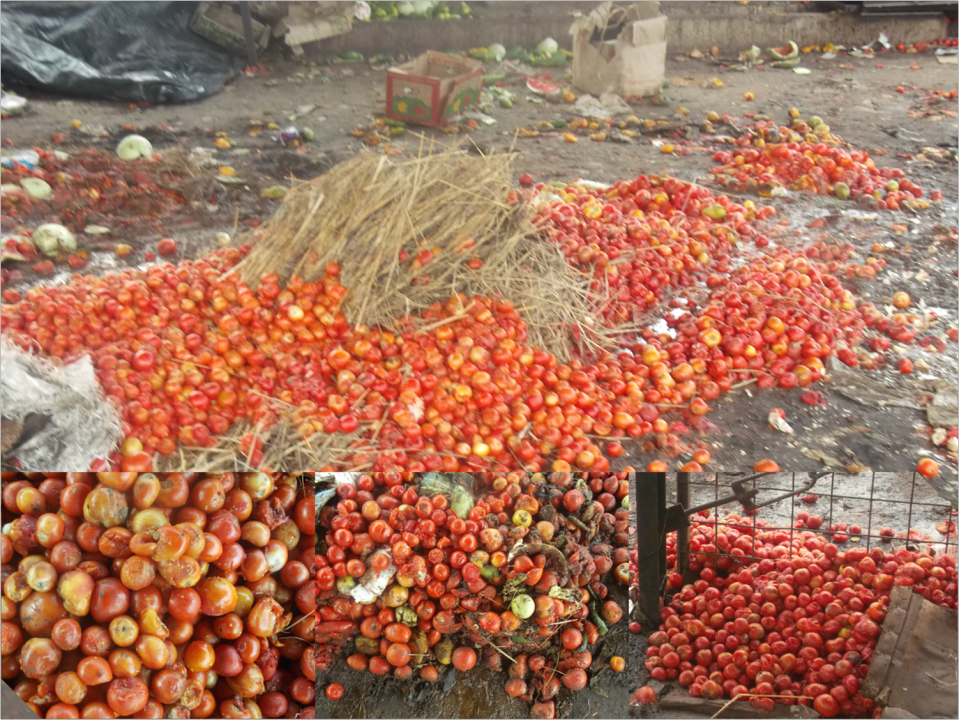Introduction:
Indian agriculture, characterized by its diversity and abundance, faces a significant challenge in the form of post-harvest losses. Despite being one of the world’s largest producers of fruits, vegetables, and grains, a substantial portion of the harvest is lost between the farm gate and the consumer’s plate. This article explores the causes of post-harvest losses in Indian agriculture and suggests sustainable solutions to mitigate this issue.
Causes of Post-Harvest Losses:
Infrastructure Deficiency:
Inadequate storage and transportation infrastructure are major contributors to post-harvest losses. Lack of proper cold storage facilities, warehouses, and transportation options leads to perishable produce being exposed to unfavorable conditions, resulting in rapid deterioration.
Inefficient Supply Chain:
The supply chain in Indian agriculture is often long and convoluted, involving multiple intermediaries. This complexity can lead to delays, mishandling of produce, and increased chances of spoilage. Streamlining the supply chain is crucial for minimizing losses.
Poor Handling and Packaging:
Improper handling and packaging practices at various stages of the supply chain contribute to damage and spoilage. Inadequate training of farmers and workers on best practices for handling and packaging exacerbates this issue.
Lack of Market Access:
Many farmers, especially in remote areas, face challenges in accessing markets. This results in a limited pool of buyers, making it difficult for farmers to sell their produce quickly, leading to increased chances of spoilage.
Technology Gap:
The adoption of modern technologies for storage, processing, and transportation is not uniform across the agricultural sector. Many small and marginal farmers lack access to technology that could significantly reduce post-harvest losses.
Sustainable Solutions:
Improving Infrastructure:
Investing in the development of cold storage facilities, warehouses, and transportation infrastructure is crucial. Government and private sector collaboration can play a significant role in creating a robust network that ensures the smooth flow of produce from farms to markets.
Promoting Efficient Supply Chains:
Implementing efficient supply chain practices, such as direct farmer-to-consumer models, can reduce the number of intermediaries involved. This not only ensures better prices for farmers but also minimizes the time and handling involved in getting produce to consumers.
Capacity Building and Training:
Providing training to farmers on post-harvest management, including proper handling and packaging techniques, is essential. Extension services can play a role in disseminating knowledge about best practices.
Market Diversification:
Encouraging farmers to explore diverse markets, including local markets, cooperatives, and export avenues, can reduce dependence on a limited number of buyers. This diversification can help in finding better markets for produce.
Technology Integration:
Promoting the use of technology, such as mobile applications for market information, IoT-enabled storage solutions, and efficient transportation tracking, can bridge the technology gap and enhance the efficiency of the entire supply chain.
Policy Support:
Government policies that incentivize the adoption of modern post-harvest technologies and practices can significantly contribute to reducing losses. This includes providing subsidies for cold storage facilities, promoting farmer cooperatives, and facilitating market linkages.
Conclusion:
Addressing post-harvest losses in Indian agriculture is not just an economic imperative but also a critical step towards achieving food security and sustainability. By focusing on infrastructure development, supply chain efficiency, capacity building, technology adoption, and supportive policies, India can significantly minimize post-harvest losses and ensure that the bountiful harvests contribute to the well-being of farmers and consumers alike. Sustainable solutions that integrate modern technologies with traditional agricultural practices can pave the way for a resilient and efficient agricultural sector in the country.

